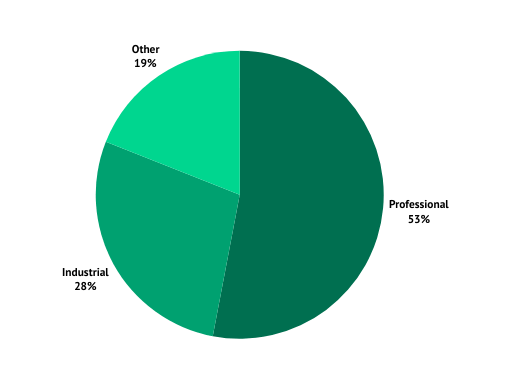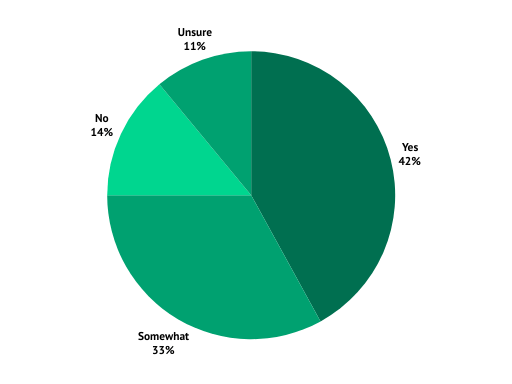The Great Resignation makes for great headline copy, but it doesn’t tell the full story. Yes, salary is still a key consideration for most employees. It’s important to try to offer salaries within the normal range for your industry and region. Yet raises alone don’t drive loyalty or job satisfaction. Here are six strategies to help you boost comprehensive employee engagement when you can’t pay more.
1. Offer other financial perks
Work-life balance is increasingly important to employees, and there are ways to show your staff you respect that desire without breaking the bank. If your company is doing well, share the wealth through small bonuses. Or offer some amount of paid parental leave. Not everyone will use it, but most of your younger workforce will appreciate that the benefit is there when they decide to start a family.
You might also increase your match to employees’ 401(k) accounts or offer dental and vision insurance at a lower cost to your workforce. Look for small financial perks that you can afford, and which help to support the “whole employee.”
2. Get creative about better time off
These days employees frequently find themselves checking work email when they’re supposed to be on vacation. Consider arranging mandatory time off for your entire workforce. Perhaps two days during the winter holidays or several Fridays in the summer months. And set parameters to reinforce these are “no work” days: no one sends emails, and no one checks work files. This may be easier for the professional sector than for industrial businesses.
Nelson Connects 2022 Future of Work Report found that 26% of professional companies provide required days off, compared to 8% in the industrial sector. But even industrial businesses could consider offering a required day off for administrative staff or giving small bonuses to the teams that need to remain on the job. This strategy gives your employees “free” days without any work worries and doesn’t lock you into long-term costs.
Request Your Copy of Nelson’s 2022 Future of Work Report and Salary Guide
3. Help employees build a strong career path
Lack of opportunity is a key reason employees leave a company. Provide training and advancement options for valued employees. Make sure people are aware of the different types of opportunities at your company. Have managers hold regular career planning discussions with each direct report. Employee engagement rises when people can clearly see the opportunities ahead and clearly understand what they need to do to get there. Good managers offer people opportunities to learn new skills. They provide energizing challenges. Of course, this requires managers who are emotionally aware. Train your managers well, and you’ll end up with a more loyal workforce.
4. Prioritize flexibility
A 9-to-5 workday simply doesn’t work best for every employee – or for every company. A parent with school-age children might appreciate working 8 a.m. to 4 p.m. Another employee might prefer 10 a.m. to 6 p.m. to avoid the commute rush. Still others may appreciate the ability to work remotely one day a week.
In Nelson’s 2022 Future of Work Report, 53% of businesses surveyed in the professional sector say they are already increasing work schedule flexibility. Fewer companies in the industrial sector – 28% – say they can implement flex schedules. But even those might be able to arrange 4-day work weeks at 80% pay for some of their workforce. It’s a valued trade of pay for better work/life balance. And providing employees with increased ability to manage their time can be a key reason people will stay at your business in today’s competitive environment.
Increased Flexibility in Work Schedules

5. Focus on holistic employee well-being
In the professional sector, 47% of businesses surveyed in Nelson’s 2022 Future of Work Report offer virtual coaching or counseling programs. Thirty-five percent offer subscriptions to mental health, yoga, or meditation apps. Those percentages are lower among companies in the industrial sector, but they needn’t be. Most companies could offer to reimburse employees for the cost of a stress management class or a series of fitness classes. When workers feel that their whole well-being is valued, they’re more likely to value their employer in return.
Is Your Company's Benefits Program Designed to Holistically Nurture Employee Wellness?

6. Know that recognition + respect = retention
Feeling unsupported is a key reason employees give when they leave a company. Annual awards are fine, but people who feel appreciated every day are happier on the job. Recognize good work regularly in small doses. Praise people when they achieve small milestones such as completing a project or meeting a tight deadline. Say thank you often. Word gets around when your company has this type of culture. Not only will regular recognition and respect help you retain employees, but these guiding principles will also attract the type of people who can help your company thrive.
So remember: Even if you can’t boost salaries or pay rates, you can provide other financial incentives and supportive measures to strengthen employee engagement and retention, which ultimately reinforces your company’s most important asset: a loyal and dedicated workforce.
Tip: In addition to the suggestions above, it's important that your salaries are in line with going rates. Find out where you stand with Nelson's 2022 Salary Guide. Request a copy of Nelson's Salary Guide today.
If you need assistance with your hiring needs,
our staffing experts are here to help.
Contact us today.
Jayne Garrison, M.S., is a writer and editor from the San Francisco Bay Area. She specializes in website content, ghostwriting, and thought leadership pieces.


